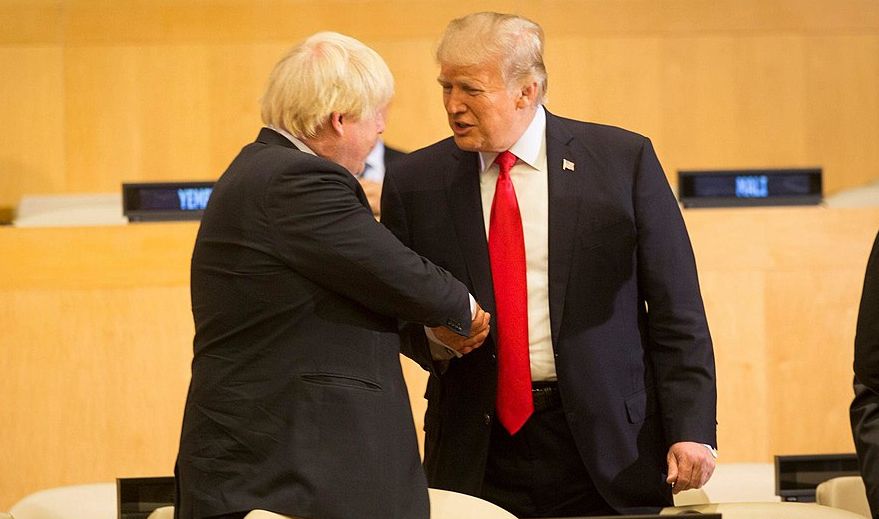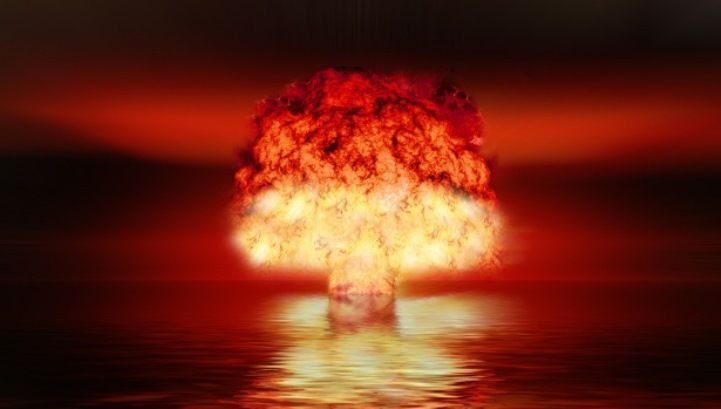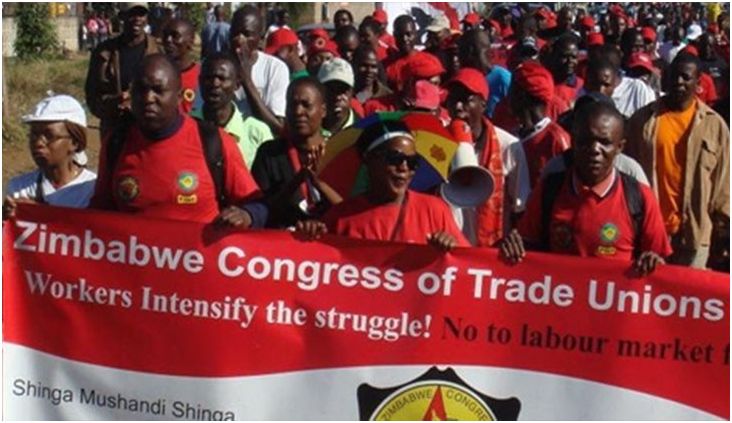Unprecedented military response of the regime in Tehran to the provocative Israeli assassination of Iranian generals in Damascus leads to fear of a chain reaction.
Shahar Ben Horin, Yasha Marmer, Socialist Struggle in Israel-Palestine
The unprecedented military response of the regime in Tehran to the provocative Israeli assassination of Iranian generals in the Iranian consulate complex in Damascus is leading to fear of a chain reaction that will ignite a regional conflagration. Netanyahu and the “war cabinet” ministers, who are responsible for a historic bloody crisis and who initiated the assassination that led to the events in the first place, are patting themselves on the back for the wide-scale interception of the attack. Ultra-nationalist Israeli politicians, from Itamar Ben-Gvir and Bezalel Smotrich to Miki Zohar and Tali Gottlieb, openly incite a regional war.
The Iranian action has, for the time being, turned attention away from the catastrophe unfolding in Gaza and has reconsolidated the camp of Western imperialism around Israeli capitalism. Biden emphasized again that US support for the Israeli regime is “ironclad.” The G7 forum joined him in a statement of condemnation and a threat to increase sanctions against the regime in Iran, while simultaneously trying to put pressure on the Israeli government to avoid a retaliation for a retaliation — for fear of losing control over the events — and repeated a hypocritical call for promoting a ceasefire in Gaza.
In Gaza, though, residents reported one of the quietest nights in the last gruesome six months, when the Israeli war machine focused on the Iranian attack. However, the genocidal onslaught carried out by the Israeli right-wing regime on Gaza, while cynically exploiting the atrocities of 7 October, still continues, but without any agreement even on a temporary ceasefire. Meanwhile, two reserve brigades have been mobilized for additional attacks in Gaza and the threat of an Israeli invasion of Rafah continues to hover in the air. The death toll has crossed the unimaginable figure of 33,000 and a horrific hunger crisis is raging.
The Iranian delegation to the UN declared that the incident was over as far as Tehran was concerned, unless “the Israeli regime makes another mistake.” Washington made it clear that it would not support an Israeli attack on Iranian territory, but the Netanyahu-Ganz government threatened in advance that it would respond militarily with attack on Iranian territory to any attack emanating from Iranian territory, and it was reported that the heads of the Israeli army and the Mossad had approved possible attack plans.
A series of acts of sabotage and assassinations on the territory of Iran have been attributed to the State of Israel over the past few years, but this time the Ayatollah regime warned in advance that such a scenario would be met with a military escalation on a larger scale. The weekly meeting of the Israeli government was canceled, and it was reported that the smaller “war cabinet” was convening to decide on a “response,” but it seems that there was disagreement about the possibility of an immediate military response. There is restraining pressure on the Israeli regime to take the time to maintain the renewed public support lavished on it by Washington and its allies, but the message from the “war cabinet” is that a response will come.
About 350 UAVs (drones), ballistic missiles and cruise missiles were launched at Israeli targets, and made their way from Iran, Iraq, Yemen and Syria for hours between Saturday and Sunday (April 13–14). The absolute majority were intercepted, as must have been estimated in advance in Tehran, by a combined array of armies including those of Israel (60%), the US, UK, France, and Jordan, also relying on intel from Saudi Arabia and UAE among others. The attack was measured and accompanied by advance warning, but nevertheless marked a warning sign of the dangers of an acute military escalation. The airspace of the countries of Israel, Egypt, Jordan and Lebanon remained closed for hours, and it was announced that the Israeli education system would be shut down for one day.
There was a report of minor damage to infrastructure at the Israeli Air Force base Nevatim near Arad. A 7-year-old girl from the “unrecognized” Bedouin village near Al-Fura’a was injured when struck in the head after, in the absence of a sheltered space, shrapnel penetrated the roof of her house, which the authorities of Israel are seeking to destroy in the coming days. Interceptions of ballistic missiles were recorded in a number of locations, including over Jerusalem (including over the Al-Aqsa Mosque), and in the Tel Aviv area, the (annexed) Golan heights, and mainly in the south, including Dimona (near the nuclear reactor). About 100 short-range launches were carried out by Hezbollah on the Israel-Lebanon border. Hours earlier, Iranian commando forces took control over a ship near the coast of the United Arab Emirates, partially owned by the Israeli tycoon Eyal Ofer, supposedly also as part of their response.
Biden’s warning did not deter Khamenei
Biden’s repeated warning to Khamenei — “don’t” — did not prevent this show of force from taking place after two weeks of threats. The shift in the willingness of the Ayatollah regime to violate, in a measured manner, the dictates of US imperialism is based on a recognition of the complicating effect of the historic bloodbath in Gaza for Washington and its evident interest in limiting military intervention and curbing military escalation in the region. This is the first time that the Iranian regime has acted militarily (with the exception of cyber operations) against Israeli targets from Iranian territory and not only with the help of proxies. This is an attempt to set a new equation, charging a price for Israeli attacks against the interests of the Iranian regime.
The Iranian regime itself is in deep crisis, even after the suppression of the latest wave of uprisings in 2022, and continues to use hypocritical and hollow “anti-imperialist” and “pro-Palestinian” rhetoric to garner support. It is reasonable to assume that among the masses around the world who are horrified by the atrocities in Gaza, there will also be those who may adopt a sentiment of sympathy for any regime that challenges the Israeli regime and Washington, but of course this is an oppressive regime that does not intervene in the interests of the Palestinian or Iranian masses, but rather to advance the ambitions of the ruling elite in Iran and its allies. Nonetheless, and although some among the opposition to the regime may see the showcase attack as nothing more than a farce, due to the current stage of ebb in the resistance movement and the lack of left-wing reference points to offer an alternative for the masses, the regime is certainly capable of tightening to some extent the base of support on which it relies by exploiting the mass sentiment of solidarity with the Palestinian population being massacred in Gaza.
The fact that among the layers in Iran that oppose the regime there have been over the years and also now a variety of confused and right-wing voices, who in defiance of the ayatollahs’ propaganda side with US imperialism, the Israeli regime and a return to the Shah’s monarchy, reflects the heavy oppression against the left-wing voices that offer a genuine alternative to the regime, and does not indicate, as the Israeli ruler class dreams, the support of the Iranian masses for the Israeli occupation.
Danger of regional conflagration
In the “Gulf War” in 1991, when a US-led coalition attacked Iraq, while US imperialism was striving, during the fall of Stalinism and the end of the historic cold war, to enforce itself as the exclusive “world policeman” and shape the regional order, the Israeli regime obeyed when it was instructed to not intervene militarily, in order not to discourage the participation of the Arab countries in the US-led attack, even while the Iraqi Scud missiles landed in Israel. Today, US imperialism is in a much weakened position in the world and in the region, and as evidence, before the Iranian attack, the monarchies in the Gulf demanded that US bases in their territory not be used at this stage for a direct attack against Iran, for fear of regional war. Even the Trump administration had been forced to take into account public reluctance in the United States and a weakened economic and geopolitical position, and distance itself from the idea of storming into entanglement in another war in the Middle East. Israeli capitalism faces a generalized “security” crisis, without a clear exit strategy, and despite a deep strategic dependence on US imperialism, it may seek to secure its “security” interests even without Washington’s consent. This is a significant factor which actually creates the risk of a regional flare-up.
The assassination in Damascus on April 1, in which Mohammad Reza Zahedi (Hassan Mahdawi), commander of the Quds Force of the Iranian regime’s guards in Syria and Lebanon, was also killed, was the most significant that the Iranian regime has suffered since the Trump administration assassinated General Soleimani in 2020. The Biden administration complained that it was not updated in advance. Despite this, the troika of the US, UK and French delegations to the UN “Security Council” blocked (on 3 April) an official statement of condemnation, proposed by the Russian delegation, of the bombing of the consulate building. Now, in response to the Iranian attack, the Kremlin issued a statement describing the action as an exercise of the right to self-defense. The conflict process in the region is strengthening Russia-Iran relations, while both regimes are trying to win support in the region from the masses who are angry about the massacre, the enforced starvation and destruction in Gaza.
The Israeli right-wing government’s decision to assassinate Iranian generals and the activists of the Palestinian Islamic Jihad organization, knowing that this could lead to a widespread military escalation in the region, came when in the background, pressure from Washington and its allies in the “West” and the region for a cease-fire in Gaza became stronger. At the same time, a dynamic of continuous escalation in the war continued on a low-medium intensity between the Israeli army and Hezbollah, with repeated threats of an extensive Israeli attack on Lebanese territory (tens of thousands of residents on both sides of the Israel-Lebanon border have been displaced from their homes for six months). The Biden administration symbolically allowed the approval of a resolution in the UN “Security Council” on March 25 calling for an immediate cease-fire, and after the killing of the workers of the “World Central Kitchen” association in Gaza, a few hours after the assassination in Damascus, increased its public pressure on Israel, accompanied by an implicit ultimatum to Israel to abide by its discipline. This pressure led to more supply trucks being allowed into Gaza — a minimal relief in the use of the barbaric weapon of starvation against the population — but not to a ceasefire.
Not only is Netanyahu showing an unwillingness to be flexible in negotiations on a cease-fire in Gaza and a hostage and prisoner exchange deal, but the Israeli government as a whole continues to strive to impose conditions that include preparing for an Israeli invasion of Rafah and allowing occupying forces in the area for a period of months to years. This line, which ultimately reflects a strategic impasse, is also based on the fact that among the Israeli public there is still widespread support for the idea of a “war on Hamas,” and is also influenced to some extent by the maneuvers of Netanyahu himself who is desperate to hold on to power.
The leaders of Hamas, who as expected welcomed the Iranian attack, once again refused the latest Israeli draft for a temporary cease-fire arrangement, having so far not agreed to accept their dictates. They are surely aware of the declining momentum of the Israeli attack, the pressures in Israeli society to return the abductees, and the increased tensions between Washington and the Israeli government. As much as the Hamas leadership originally hoped that the surprise attack on 7 October would ignite an orchestrated detonation of a “ring of fire” against the Israeli state, this was largely proved to be false. In accordance with Tehran’s wishes and also with the pressures of the Lebanese public, Hezbollah avoided entering into a full-frontal conflict with the Israeli army. The Houthis (‘Ansar Allah’) did succeed through the blockade in the Red Sea to disrupt a global trade route and lead to a limited intervention led by the US military, but they had no effect on the moves of the Israeli regime. However, the crisis in process at a regional level has followed a continuous trend of expansion, the curbing of which depends on stopping the attack on Gaza.
A balancing act for the Israeli right-wing government
The assassination in Damascus that led to the Iranian attack was ultimately a balancing act for the Israeli regime, which restored and put back on the agenda the interests that connect it to Western imperialism. Throughout the last period, despite the crocodile tears and increasing international pressure from the governments of the “West” to curb the Israeli attack in Gaza — for fear of far-reaching destabilizing consequences, and in particular the fueling of anger and radicalization on a mass scale — the various divisions within the camp of Western imperialism have been dwarfed in comparison to fundamental geo-political considerations, in the context of the global inter-imperialist struggle, between the Washington-led and Beijing-led camps.
The massive arms shipments and economic support for the occupying power which is slaughtering the Palestinians were certainly not popular, and cost Biden in particular electoral support. However, they are intended to make it clear that Washington remains the “landlord” in the region, determined to tighten a coalition of regimes in conflict with the Iranian regime, its allies and proxies, and repel any possibility of the strengthening of the regional influence of Chinese and Russian imperialism at the expense of the “West”.
The open contacts between Indonesia, the largest Muslim country in the world — working to join the OECD club — and Israel, about the possibility of normalizing relations, as well as the continued promotion of the idea of a future deal between the US and Saudi Arabia that would include a defense alliance and Israeli-Saudi normalization, illustrate the dynamic of inter-imperialist struggle between the blocs, into which the bloody crisis in Gaza was integrated from the beginning, and which also affects decisions in Tehran and Tel Aviv. Therefore, the soft challenges to the attack on Gaza and the occupation in the form of legal and diplomatic measures, under the pressure of public opinion and the international solidarity movement, have so far resulted in only limited scratches to the international relations of Israeli capitalism.
The struggle to stop the bloodbath in Gaza and to prevent a regional war
The situation remains extremely volatile. Another Israeli attack sooner or later against Iranian targets may also be met with a coordinated intervention with significant firepower on the part of Hezbollah, which is easily able to push for a catastrophic Israeli attack in Lebanon. There could even be a whirlwind of direct exchanges of blows between Israel and Iran, which may attract a deeper intervention from both US imperialism and from Beijing and Moscow. Stopping the attack on Gaza, the attacks and pogroms by military forces and extreme right-wing settlers against Palestinians in the West Bank, and the danger of the regional war, remains an urgent task.
To the extent that governments in the “West” resorted to increasing pressure for a cease-fire in Gaza, this was the result of fear of losing control over events and of the development of mass anger and mass struggles. Liberal forces, including on the Israeli left, who are calling on the Biden administration to solve the crisis are missing the point. Washington is the number one enabler and fueler of the bloodbath in Gaza and of the process of regional confrontation. The mass demonstrations throughout the region and the world, trade union actions to stop arms shipments, the Palestinian demonstrations, and also the Israeli demonstrations in favor of “Deal Now” and “Elections Now” have all simultaneously exerted the most significant pressures on governments, including the Israeli government, to make concessions. They point in the direction necessary to stop the atrocities and to fight for a way out of the circumstances that led up to this point.
In order to stop the deterioration, it is necessary to build a struggle with a program of opposition to the Israeli attack on Iran, to the policy of assassinations, and to stop the attack and the bloodbath in Gaza. It is necessary to strengthen the demonstrations, build organizations to promote the struggle, and organized actions of workers around the world and in the region to force a ceasefire, oppose the military aggression of the Israeli right-wing government, and imperialist intervention in the region from the west and east. To overthrow the Israeli “government of blood”, and to fight against all the oppressive regimes in the region. An end to the siege, occupation, settlements and poverty. To promote the building of socialist parties of class struggle throughout the region. To provide all the necessary resources for rebuilding and restoring communities, under democratic community control, in Gaza, the Western Negev/Naqab and on both sides of the border in Lebanon, through the expropriation of banks and key resources from the hands of capital at the local and regional level. Yes, to a mass struggle for Palestinian national and social liberation, and regional peace, based on an equal right to existence and self-determination for all nations, as part of a struggle for socialist change.




